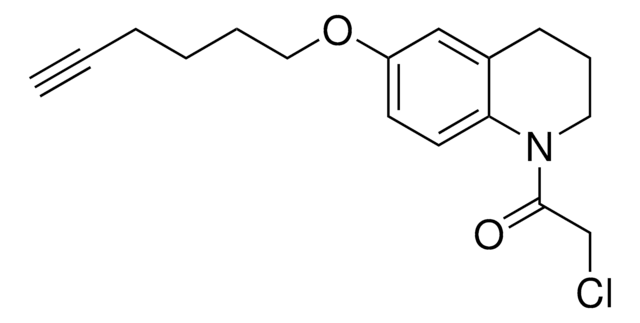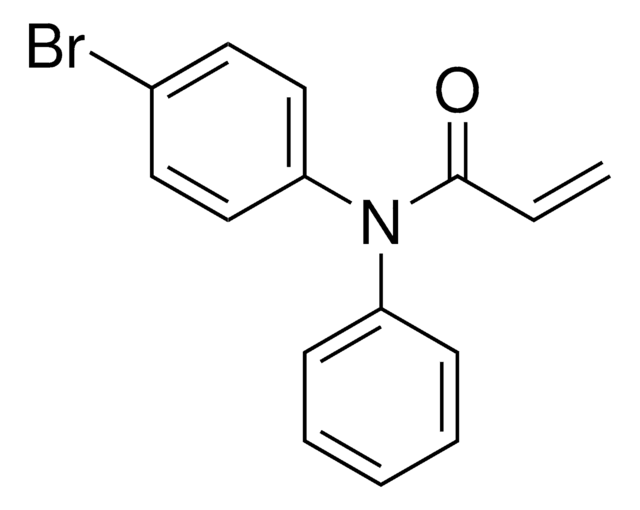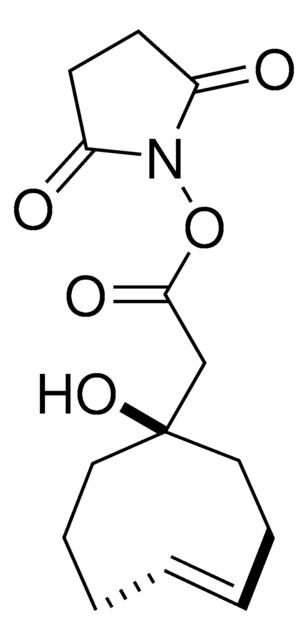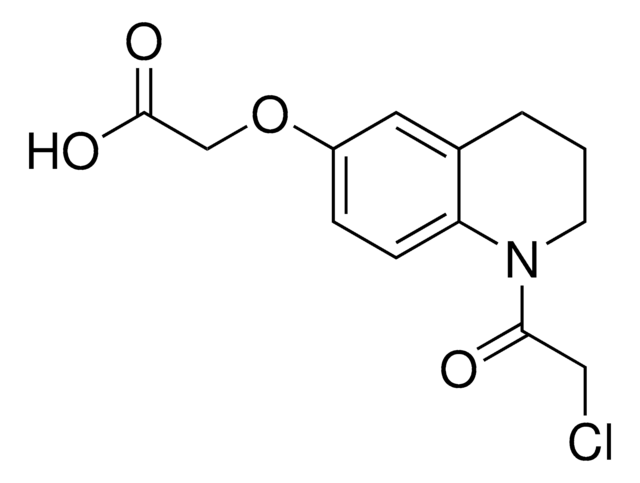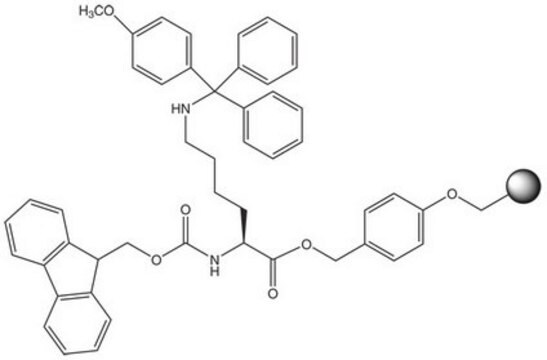Alle Fotos(1)
Wichtige Dokumente
925136
4,6-Dimethyl-2-(methylsulfinyl)-3-nitropyridine
Synonym(e):
2-Sulfonylpyridine, Cysteine-reactive electrophile, SNAr probe
Anmeldenzur Ansicht organisationsspezifischer und vertraglich vereinbarter Preise
Alle Fotos(1)
About This Item
Empirische Formel (Hill-System):
C8H10N2O3S
CAS-Nummer:
Molekulargewicht:
214.24
MDL-Nummer:
UNSPSC-Code:
12352200
NACRES:
NA.22
Empfohlene Produkte
Anwendung
4,6-Dimethyl-2-(methylsulfinyl)-3-nitropyridine is a sulfoxide-containing fragment for covalent ligand discovery via cysteine labeling as demonstrated by Zamboldo and coworkers. Fragment electrophiles are useful in chemoproteomic and ligandability studies for both traditionally druggable proteins as well as ″undruggable,″ or difficult-to-target, proteins.
Related useful products may include cysteine fragment KB02 (912131), IA alkyne (924237), IA 5-TAMRA (925020), desthiobiotin iodoacetamide (923826), or biotin iodoacetamide (B2059).
Related useful products may include cysteine fragment KB02 (912131), IA alkyne (924237), IA 5-TAMRA (925020), desthiobiotin iodoacetamide (923826), or biotin iodoacetamide (B2059).
Sonstige Hinweise
Ähnliches Produkt
Produkt-Nr.
Beschreibung
Preisangaben
Lagerklassenschlüssel
11 - Combustible Solids
WGK
WGK 3
Flammpunkt (°F)
Not applicable
Flammpunkt (°C)
Not applicable
Hier finden Sie alle aktuellen Versionen:
Analysenzertifikate (COA)
Lot/Batch Number
It looks like we've run into a problem, but you can still download Certificates of Analysis from our Dokumente section.
Wenn Sie Hilfe benötigen, wenden Sie sich bitte an Kundensupport
Besitzen Sie dieses Produkt bereits?
In der Dokumentenbibliothek finden Sie die Dokumentation zu den Produkten, die Sie kürzlich erworben haben.
Claudio Zambaldo et al.
Journal of the American Chemical Society, 142(19), 8972-8979 (2020-04-18)
The emerging use of covalent ligands as chemical probes and drugs would benefit from an expanded repertoire of cysteine-reactive electrophiles for efficient and diverse targeting of the proteome. Here we use the endogenous electrophile sensor of mammalian cells, the KEAP1-NRF2
Unser Team von Wissenschaftlern verfügt über Erfahrung in allen Forschungsbereichen einschließlich Life Science, Materialwissenschaften, chemischer Synthese, Chromatographie, Analytik und vielen mehr..
Setzen Sie sich mit dem technischen Dienst in Verbindung.
